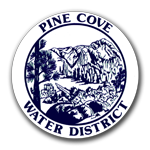Pine Needles and other oddities in Composting
With so many pine needles on the ground, it got me wondering about using them in compost. I’ve be verbally told that the pine needles are useless and just need to be raked up and disposed of, but then I came across a little article that mentioned using them. So I decided to see what other oddities you could compost. The main take-away I got was that these items need a little more prep work to make sure they don’t ruin your compost and you have to watch the acidity level and moisture level.
Pine Needles
Pine needles have a pH level between 3.2 and 3.8 when they fall from the tree but have a nearly neutral pH after composting. They break down slowly and have a waxy coating making it difficult for bacteria and fungi to break it down. If you leave the needles on the ground after falling using it as mulch around the trees, speeds up the process. The more aged and smaller they are the faster they will decompose. It’s suggested that one runs a mound of needles over with a lawn mower several times to chop them up and limit them to 10 percent of the total volume of the pile.
Nut Shells
Much like pine needles, nut shells need to be broken down into tiny pieces. Because they are so hard, the article I read suggests saving until you have at least a 1/2 gallons bag worth, pour them onto the driveway and run them over with the car a few times. These are considered a “brown ingredient” and need to be mixed well with a layer of “green ingredients”. Make sure to turn the pile every 2 weeks to add oxygen.
One main caution I saw was black walnuts as they contain a chemical that can inhibit plant growth in garden plants like tomatoes.
Onions
Onions are not recommended for addition to vermicomposting bins because worms are not big fans of odorous food scraps and the acidity does not sit well with worm gastric systems.
To avoid new the onion from growing while it sits in the compost pile, it is suggested to chop it up into halves and quarters before putting into the compost bin.
The main caution to onions is the odor that will stench from their rotting.
Pond Scum
Because pond scum and algae are living organisms, they are a rich source of nitrogen that breaks down quickly in the compost pile. They also add potassium and phosphorus.
So when you do your annual pond cleaning be sure to set aside the scum for your compost.
Use a swimming pool skimmer or rake, let the excess water drain, and then place the scum in a bucket or wheelbarrow. If the water is salty, rince the scum before adding to the compost pile.
To incorporate into your compost, begin with a small layer about 4-6 inches of brown material and mix the scum with green materials, spread this over the brown layer. Top the pile off with regular garden soil, moisten lightly and continue layering brown and green material until at least 3 feet deep. Turn the pile at least once every week checking the moisture every two or three days. The compost should be damp but not dripping.
The compost will be ready to use when it is dark brown with a crumbly texture and rich earthy aroma.
Corn Cob & Husks
Instead of tossing the husks in the trash, they can be put into your compost pile. You can use green husks or brown husks and even the cob. Even though the cob takes longer than the husks, the cobs provide air pockets in the compost pile speeding up the decomposition process so the compost is ready to use quicker than it would be from an oxygen-deprived pile.
Be sure to leave the bottom of your compost bin open so it drains well. Keep a 4:1 ratio of brown to green ingredients (the more green the more moisture it still has). Smaller pieces will decompose faster than larger pieces and turn the pile using a spade fork or shovel at least once a month.
This compost should be ready when it is dark brown and crumbly with no foul odor and no recognizable pieces of organic matter. If you still see some bits of cobs, you can remove those, use the finished compost, and put the cobs back in.
What else have you found to be useful in your compost pile?
Keep on planting, growing, and using our resources wisely!
Happy Spring!
